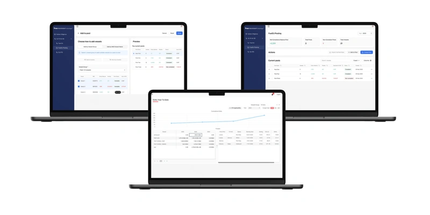Ineffective Bridge Resource Management Contributed to Maersk Ship Collision
Ineffective coordination and monitoring by the crew and harbour pilots on board the container ship Maersk Shekou contributed to its collision with the tall ship Leeuwin II in the Port of Fremantle, the Australian Transport Safety Bureau (ATSB) has found.
The 333-metre, Singapore-flagged Maersk Shekou was being navigated into Fremantle under the direction of two harbour pilots in heavy squall conditions before dawn on August 30, 2024, when the incident occurred.
Audio from the ship’s bridge, taken from the vessel data recorder, found the primary pilot did not provide the helmsman with a planned port 10° helm order to turn into the inner harbour, which went undetected by the rest of the bridge team.
This meant that as the pilot attempted to use the main engine and four attached tugs to turn the ship, the helmsman attempted to maintain the ship on the previously instructed heading of 083°, rigorously opposing the ship’s planned turn.
As a result, the Maersk Shekou continued towards Victoria Quay and collided with the Leeuwin II, which was berthed at the quay, before the stern contacted the wharf edge and containers struck the roof of the WA Maritime Museum.
The Leeuwin II was dismasted and two crew, who had been on board and were escaping via its gangway just as the collision occurred, sustained minor injuries. The container ship sustained minor damage, including a hull breach, but its crew and the pilots were uninjured.
Chief Commissioner Angus Mitchell said the ATSB found the ship’s bridge team – comprising the two pilots and the ship’s crew – ineffectively implemented bridge resource management practices.
Specifically, there was not a shared mental model of the actions needed during the passage across members of the bridge team, and they failed to adequately monitor, or challenge, the ship’s turn and position in the channel.
The ATSB’s investigation also found the secondary pilot was distracted from their monitoring responsibilities as they were engaged in a non-essential mobile phone call as the ship was transiting a critical area in the entrance channel.
The investigation also identified that making fast the supporting tugs was delayed, resulting in the bridge team, including the pilot, being engaged with the final tug’s attachment just as the ship approached the wheel over point for the inner harbour entrance channel.
This increased bridge team workload at the most critical stage of the passage.
The ATSB also identified several risk controls established by Fremantle Ports to ensure the safe entry of large container vessels had not been adequately implemented, although these did not all directly contribute to the collision.
These included entering the inner harbour channel without all tugs being secured, prior to sunrise, and well in-excess of the operational wind limits – all of which contravened documented procedures.
Both the port and the pilotage provider, Fremantle Pilots, have committed to implement a range of safety actions in response to the investigation.

















